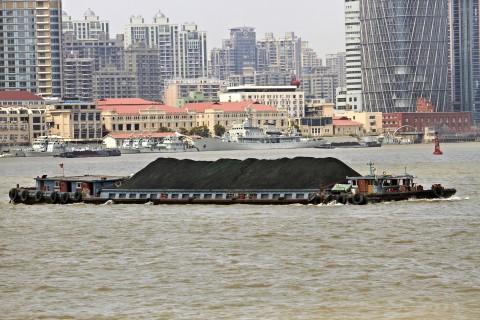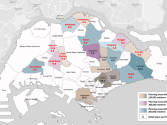
How hard will China have to work on earning "neighbours' trust" for Asia's Super Grid?
Take away China from the equation, and the massive plans for interconnecting Asia’s power sector could be shaky.
If China looks like it's cooking up another big surprise for the power industry, then what you see is what you get. It was by end-March when the State Grid Corporation of China, Korean main utility and power provider KEPCO, big Japanese renewable energy developer Softbank, and Russian grid operator PJSC ROSSETI inked a memorandum of understanding on the Asian Super Grid.
The signing has formally sealed their support and interest in building a massive interconnected grid across Asia. They will be partnering with each other to implement feasibility studies for a grid in the Northeast Asian region and plans for the super grid.
The chairman of the State Grid Corporation of China Liu Zhenya is also chairman of Global Energy Interconnection Development and Cooperation Organization (GEIDCO). Softbank chairman and CEO Masayoshi Son, who recently joined GEIDCO as vice-chair, is also the founder of the Japan Renewable Energy Foundation.
According to SoftBank spokesperson Kenichi Yuasa, Asia Super Grid(ASG) was suggested by CEO Son to promote the use plenty renewable energy resource which is produced in Asia and share the electricity from renewable energy to other countries. One of the beneficiaries will include SBG's wind power project in Mongolia. This would promote introduction of renewable energy power in other parts of Asia.
“Global Energy Interconnection(GEI),suggested by SGCC chairman Liu Zhenya has fundamentally the same concept in mind, but his scope was not only in Asia, but all over the world. So ASG would be the first action of GEI concept,” Yuasa says.
Northeast Asia Super Grid’s goals
According to Dr Kyu-won Jeong from KEPCO’s project strategy & planning Office, the Supergrid is a highly developed electrical grid, which is operating various energy sources like electric power transaction, new renewable energy synthetically and a wide area electrical grid constructing for interchanging big power.
“The North-east Asia region occupies about 20% of world population, area, GDP, trade, and is emerging as a world best global market because of continuous economic growth, and will be counted on as a global leader. The North-east Asia region’s electrical grid has different frequencies, system sizes and stances about constructing North-east Asia supergrid among nations, but if North-east Asia supergrid is realized, electric power field will lead opportunity of accompanied development. In this paper, enforcement situation of constructing North-east Asia supergrid, technical issues and research promotion method will be described,” Dr Jeong adds.
The Super Grid also aims to harvest renewable electricity in areas of very good resource conditions and get it supplied to the centers of demand, says Dr. Christian Breyer, Professor for Solar Economy, Lappeenranta University of Technology. “But apart from this, it also aims to balance the energy requirements throughout different regions and within the year due to seasonal variations.”
Lauri Myllyvirta, senior energy campaigner at Greenpeace International further explains that the basic idea is connecting the excellent renewable energy resources of Gobi Desert and possibly other sparsely populated locations to demand centers across Asia. “Long-distance grid connections, if properly implemented, can make 100% renewable energy a reality for the region with lower costs and easier integration,” he says.
Dr Breyer also adds that the existing high voltage alternating current (HVAC) power grid will be upgraded by high voltage direct current (HVDC) power lines, which are already heavily used in China. “The HVDC grid would evolve to a kind of overlay grid and interconnect all major centers of renewable energy supply and electricity demand from Mongolia to Japan, via China and Korea. However, our research indicates that still about 80% of overall electricity demand will be generated and consumed locally within a few hundred kilometers, only the rest may be transmitted for larger distances.”
Yuasa from Softbank also explains that ASG’s primary goal is to supply the electricity produced by renewable energy sources like Mongolia but with more stability and less costs.
Second goal is to solve or shrink the problem on instability of renewable energy power supply through interconnection among Asia’s huge lands. “This means we can have electricity day in and day out if grid is connected. The promotion of renewable energy power in Asia will effectively help solve global warming problem and, to some extent, other environmental problems,” he says.
China’s role in the development
Myllyvirta says that China is the biggest investor in the world into long-distance UHV power transmission. Unfortunately, in China's UHV projects, far too much priority is given to dirty coal-fired power plants. There are major market and institutional barriers to effective use of installed renewable capacity in China, with curtailment rates shooting up recently. “Resolving these will be key for China to play a constructive role in developing the grid and benefiting from it. First of all, we need to see China resolve the mounting coal power overcapacity and curtailment issues at home, and begin to use its national UHV grid for effective integration of renewable power generation across the country,” he explains.
China and State Grid Corp of China is the driving force, Dr Breyer says. “The entire approach does not make any sense without China in the key role. There seems to be a tremendous movement, led by State Grid Corp of China towards an energy system dominated by renewable electricity, mainly solar photovoltaics and wind energy, which needs to be transmitted by using grids. The current momentum is high and could further increase the annual capacity installations in solar photovoltaics and wind power.”
China’s dedication to clean energy
Recently, China's central government formally announced the policy of suspending new approvals in 13 provinces and new construction in 15 provinces.
“China is finally beginning to clamp down on its out of control coal power bubble,” says Myllyvirta. “However, these new measures fall far short of even halting the build-up of overcapacity in coal-fired power generation, let alone beginning to reduce it.”
China has made enormous strides in deploying renewable energy, with all new power demand being covered from non-fossil sources in recent years and in the foreseeable future. However, Myllyvirta says there are two important things to note with regard to the Super Grid: China will have enormous overcapacity in coal-fired power for a long time to come, as the newly announced policies, radical as they seem, won't even suffice to stop the growth of overcapacity.
“Secondly, China's own UHV project is currently being set up largely to send coal-fired power from the western coal industry centres to eastern demand centres. This means that China will need to make a clear and firm commitment to designing the Super Grid around renewable sources to make sure it's not used to export polluting energy and dump overcapacity on neighboring countries,” he recounts.
It is well-known that the societal costs of coal are very high, adds Dr Breyer, mainly due to heavy metal induced massive air pollution converting large Chinese areas into toxic places AND climate change problems. “It is obvious that a sustainable and least cost solution is based on solar photovoltaics and wind energy. Coal is not competitive anymore, at all, in particular taking into account the full societal cost,” he says.
Industry future in Northeast Asia Super Grid
Myllyvirta believes that China's coal-fired power generators and grid operators still have a long way to go to operate a modern power market where low-cost renewable sources are given full priority and coal-fired power plants adjust.
The main challenges may be not in the technical or economic field, but in the field of policy. Dr Breyer warns that China needs to be a very friendly and trustworthy partner for the neighbouring countries, otherwise they would not accept on being dependent on Chinese (renewable) electricity supply. “This trust needs to be provided by China. Within China, it needs just to be built,” he adds.
KEPCO’s Dr Jeong also writes that there are many projects to establish power system interconnection all over the world. The North-East Asia region has sufficient condition to make a SuperGrid. There is no technical problem. “But there are many obstacles like political ideology problem and historical background, etc. However there are more advantages to make interconnections though these problems. It need to follow gradual and phased procedures and build an organization council between nations that attend an expert group about technique, economy, policy and power trade through entire country’s support and close co-operation to realize North-East Asia SuperGrid,” he explains.























 Advertise
Advertise







